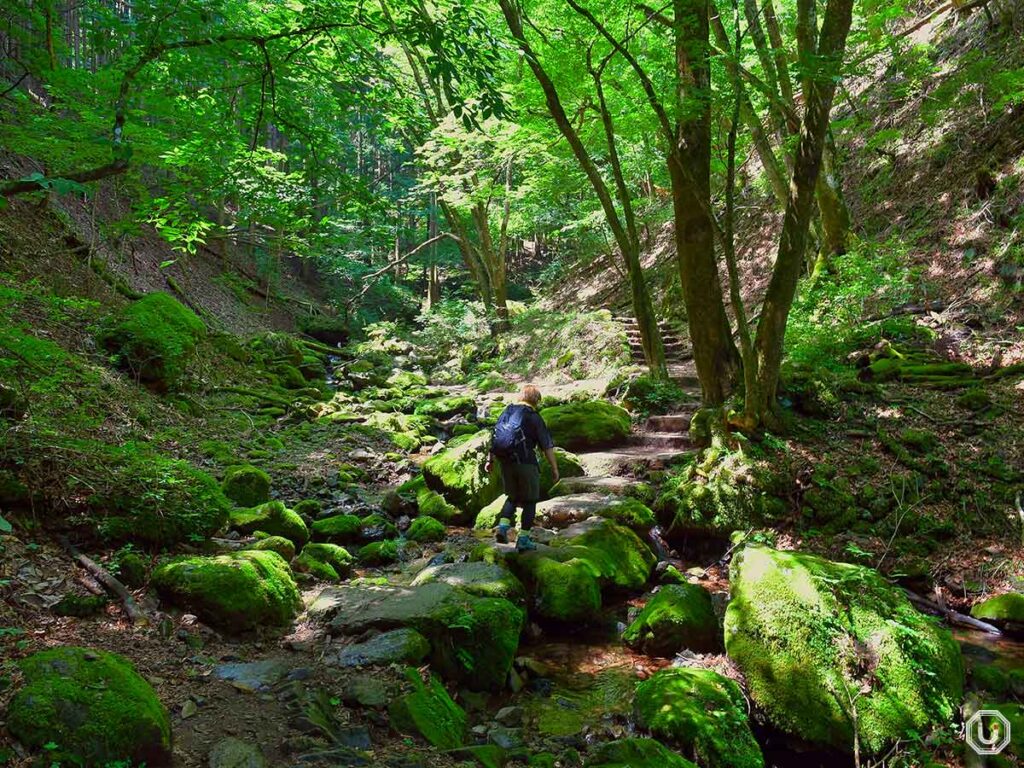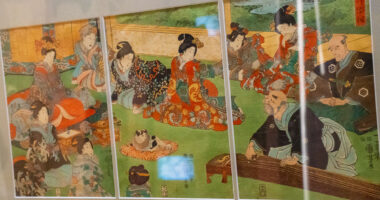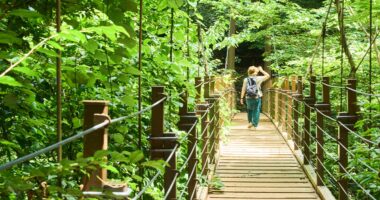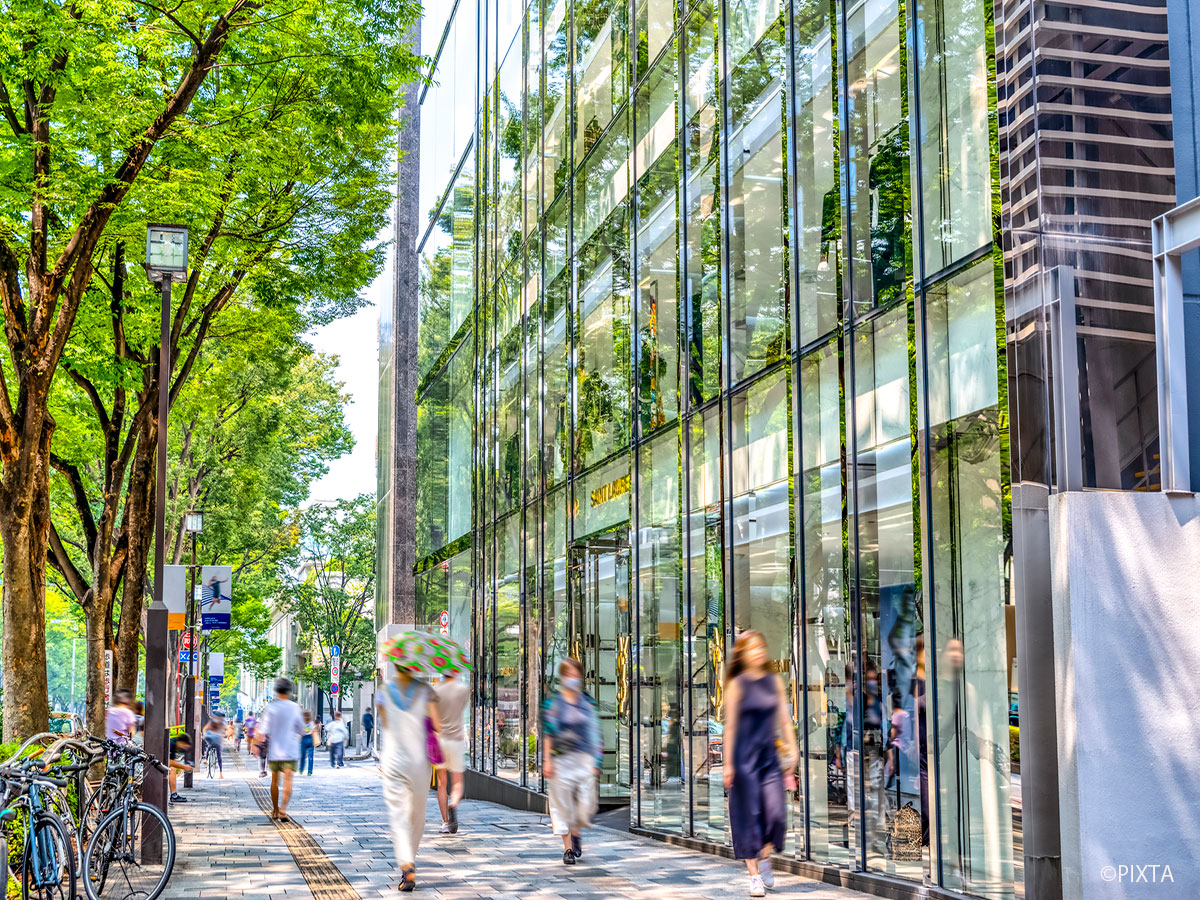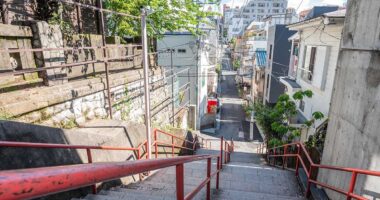Nestled in Tokyo’s Okutama area, Mt. Mitake (929 meters / 3048 feet) has long been revered in mountain worship.
At its summit lies Musashi Mitake Jinja Shrine, boasting over 1,300 years of history, drawing worshippers and hikers. Seasonal trekking trails, vibrant forests, and a lively approach to the shrine offer diverse experiences. Just two hours by train from Shinjuku, its accessibility is a key charm.
Cable car access guide to Mt. Mitake
The journey to Mt. Mitake begins at Mitake Station on the JR Ome Line. From Shinjuku, the Holiday Rapid Okutama train, operating on weekends, offers a quick and convenient trip.
The station has the area’s only coin lockers. Store heavy bags to travel light to the mountain.
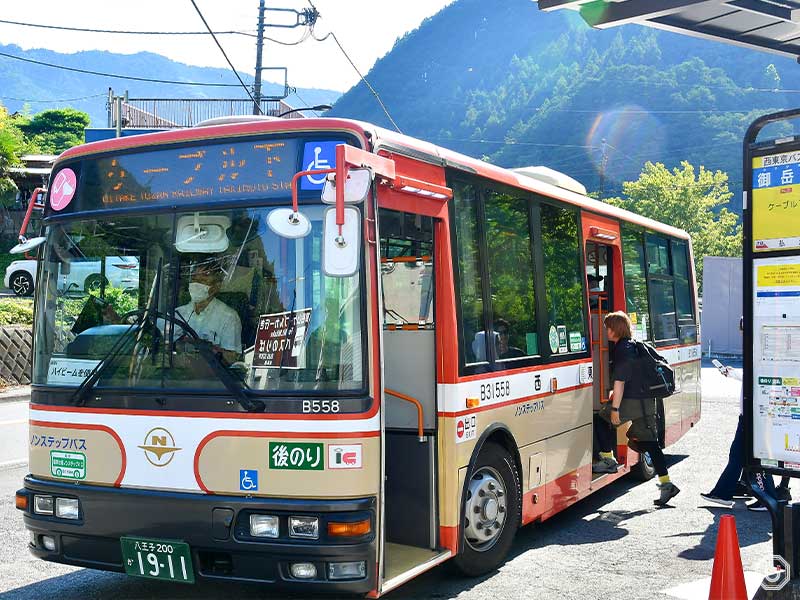
About 10 minutes by bus to Takimoto Station
From Mitake Station, take a bus to “Cable Car Base” for Takimoto Station. The fare is 600 JPY (tax included) one way or 1,200 JPY round trip.
A hiking trail near Takimoto Station leads to Mitake-san Station, the cable car’s endpoint, in about 90 minutes—ideal for those wanting to immerse in nature.
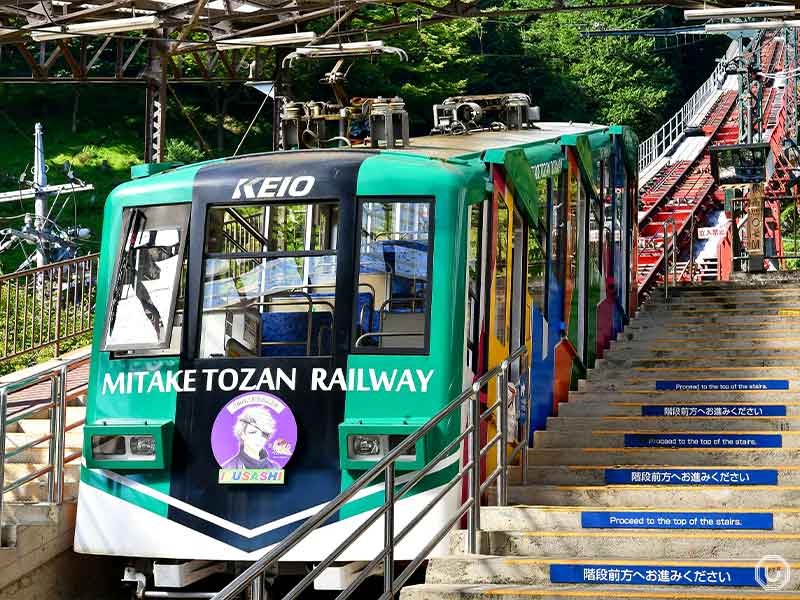
Cable car
The cable car ride takes 6 minutes, climbing a steep 22-degree incline. A single-track passing moment lets you wave at travelers in the opposite car. As the endpoint nears, Okutama’s mountains fill the view.
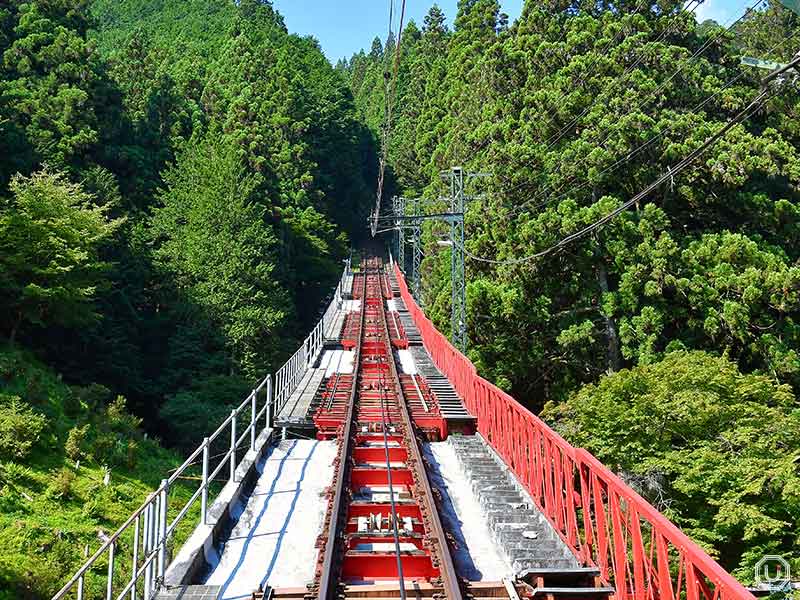
Stunning views from the cable car
At Mitakesan Station, Mitake-daira, an observation area with benches and eateries, awaits. Nearby maps and guides help plan your route.
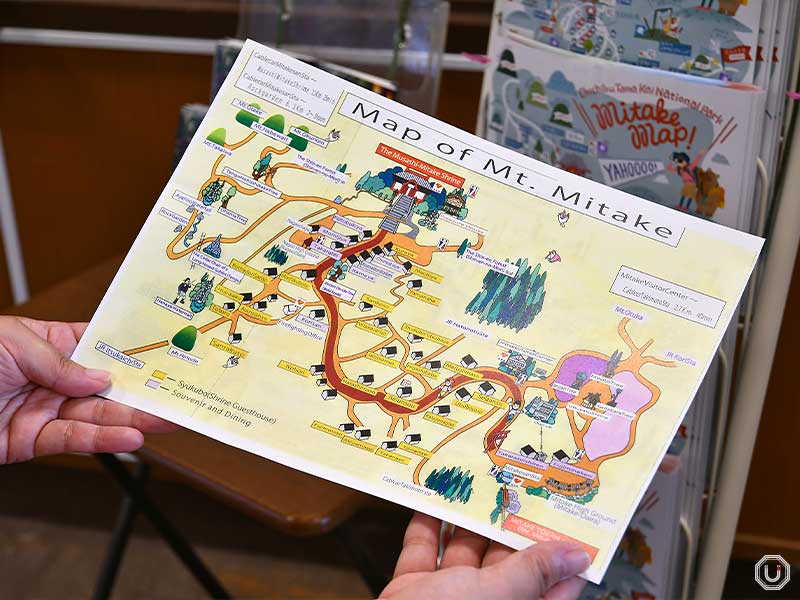
English area maps available
It’s about a 25-minute walk to Musashi Mitake Jinja Shrine via the main approach path.
For this walk, we took a slight detour off the main path to pass through a cluster of renge shōma (false anemones), which are at their peak in summer.
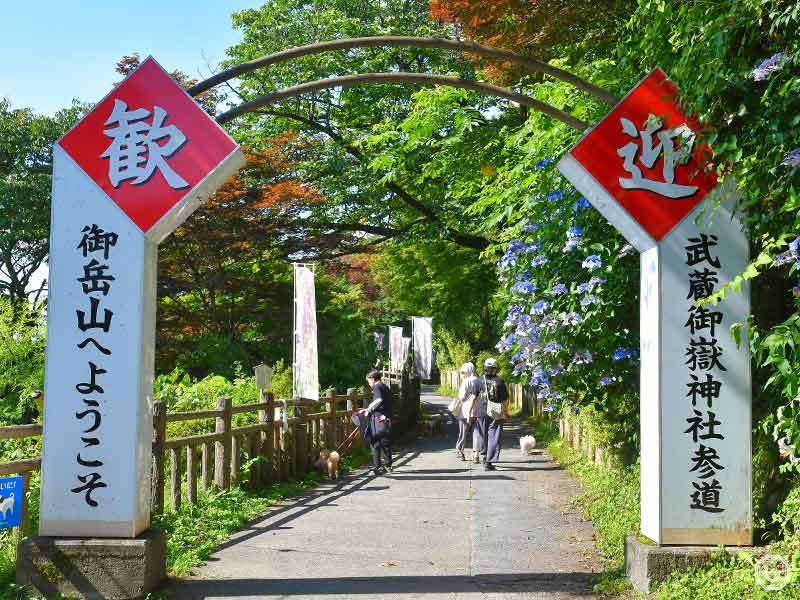
Dog-friendly shrine with stunning views
From Mitake-daira, head opposite the main trail to find the cluster of false anemones said to be the most impressive in all Japan. During our visit, the flowers were still budding, but they peak in August, attracting crowds.
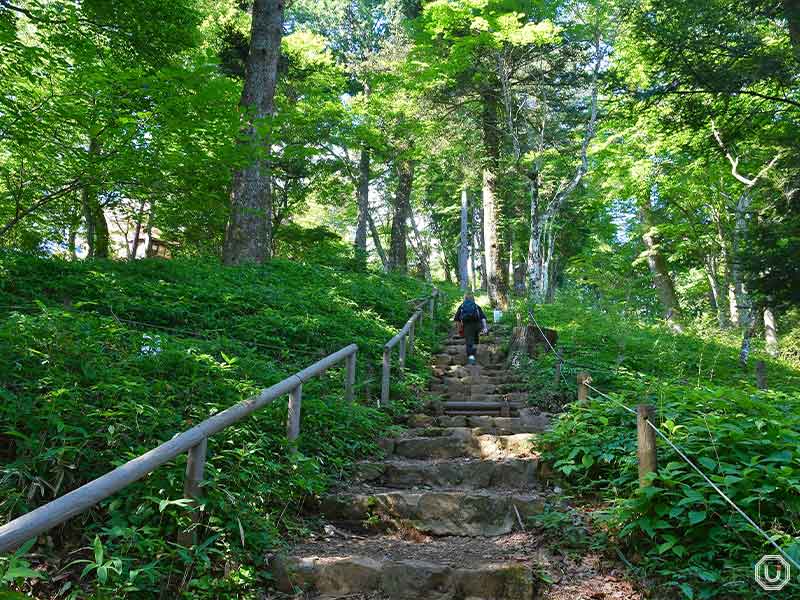
False anemones flank the stairs
After the flowers, reach Ubuyasu-sha (Ubuyasu Shrine), dedicated to childbirth, safe delivery, and longevity. Towering cedar and cypress trees create a sacred atmosphere.

Ubuyasu-sha
Continue to an area with eateries and lodges. A visitor center offers insights into Mt. Mitake’s nature and history.
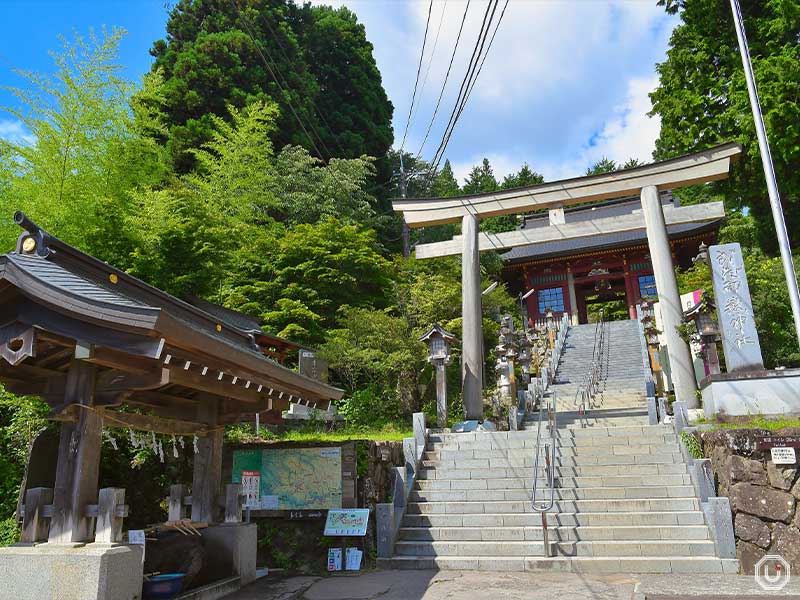
The path to Musashi Mitake Jinja Shrine involves steep, paved stairs, manageable in sneakers for shrine visits. For hiking trails or walking from Takimoto Station, trekking shoes are safer.

Dog-walking hikers are a common sight, unique to Mt. Mitake. Most Japanese shrines ban four-legged animals, but Musashi Mitake Jinja Shrine reveres dogs due to a legend of a white wolf guiding Yamato Takeru (a mythical hero), becoming Ōkuchi no Magami (Great-Mouthed True God).
This makes it a rare place for dog-friendly worship and hiking. The cable car has dedicated pet spaces for shared journeys.
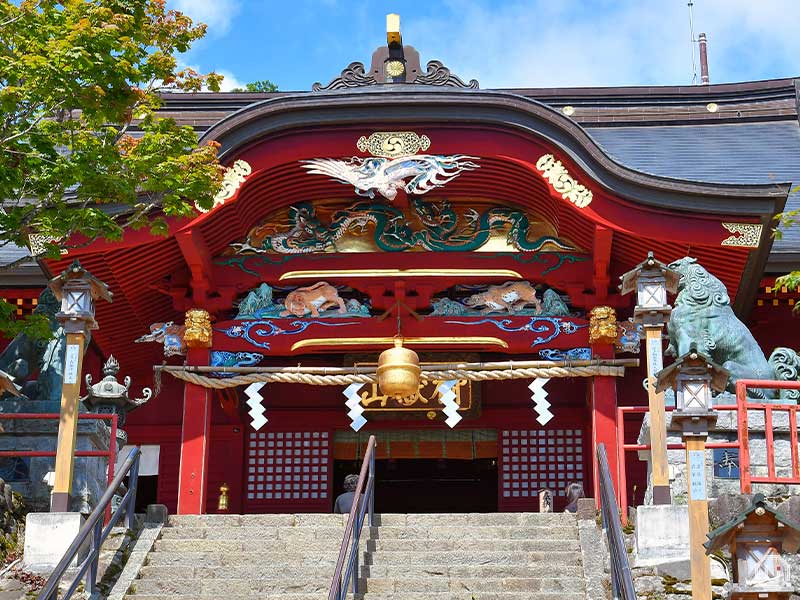
Musashi Mitake Jinja Shrine
In 736 AD, the high priest Gyōki, known for having contributed to building the Great Buddha of Nara, built a hall for the deity Zaō Gongen here, and that is how Musashi Mitake Jinja Shrine was established. The views from the shrine grounds are breathtaking, erasing the climb’s fatigue.
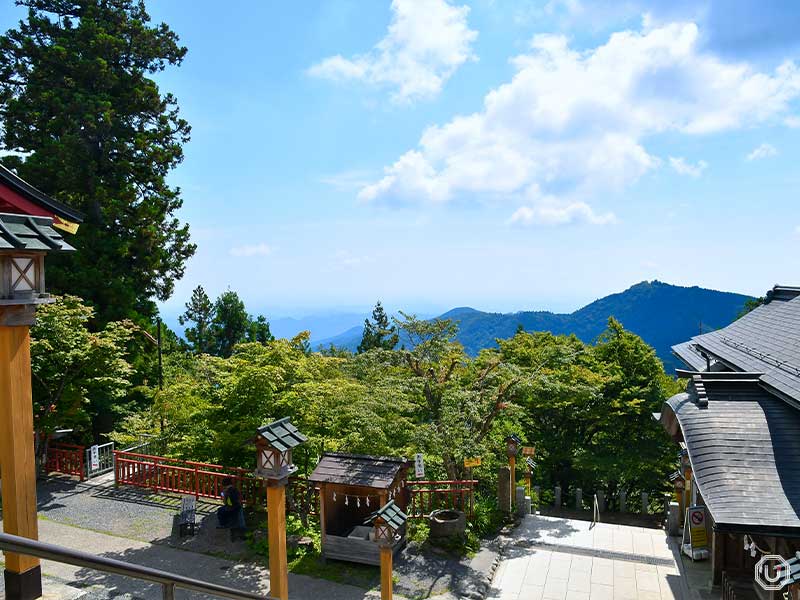
View from Musashi Mitake Jinja Shrine
Mt. Mitake’s oasis: Rock Garden
After visiting Musashi Mitake Jinja Shrine, head to the famous Rock Garden. Its trekking trail, with mossy boulders and clear streams, showcases Okutama’s stunning beauty.
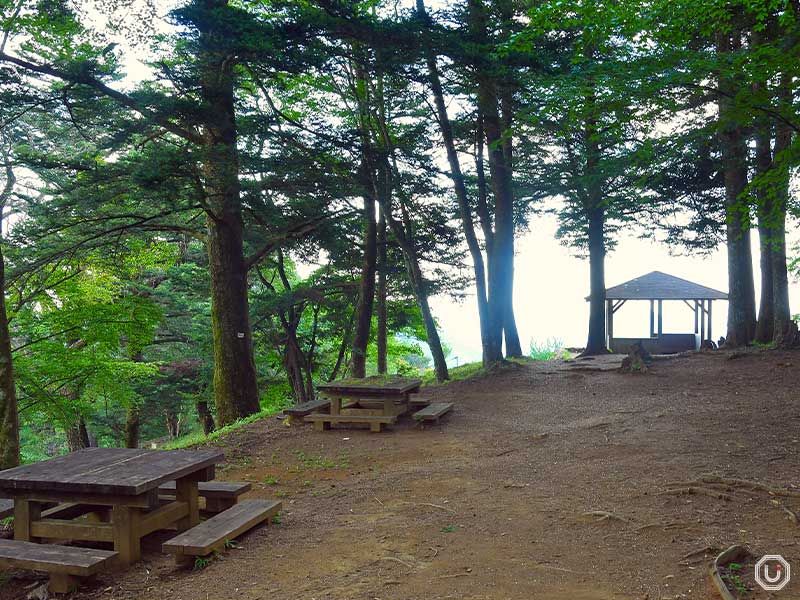
Nagaodaira
Follow signs to Nagaodaira, a scenic rest area with teahouses and an observation deck, surrounded by trees—a hiker’s haven.
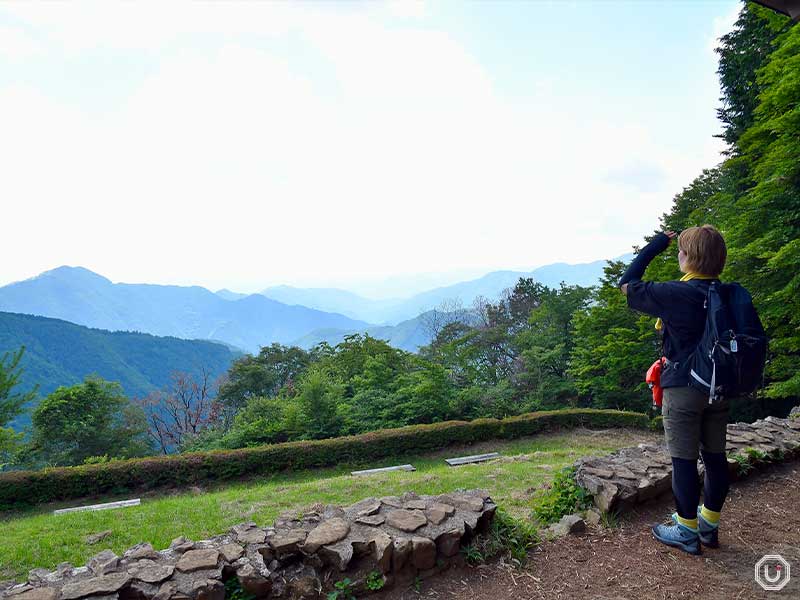
View from Nagaodaira
Benches offer views of layered Chichibu and Okutama mountains, vibrant with seasonal colors. Hikers enjoy picnics or warm soup from portable stoves, savoring a luxurious moment.
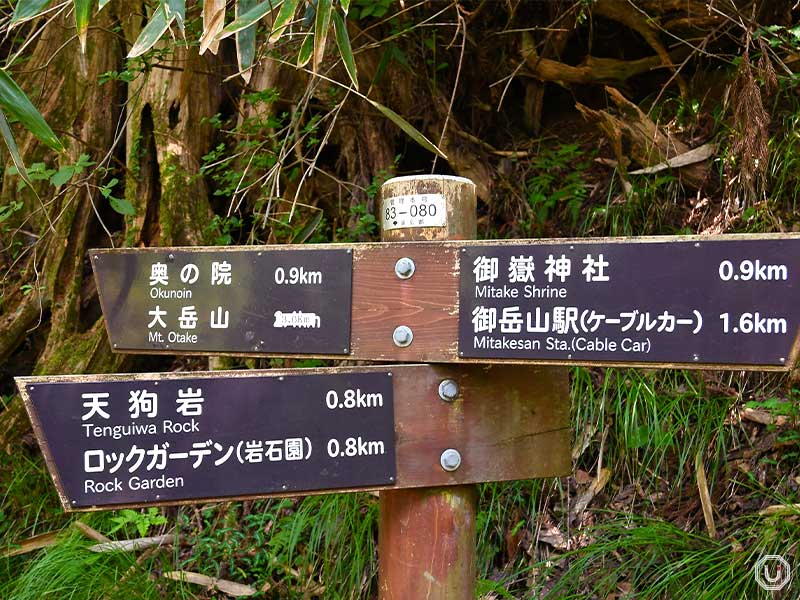
Trail sign
From Nagaodaira, trails branch out. The Rock Garden loop takes about 2 hours. For avid hikers, routes to nearby Odake-san are recommended.

Tengu-iwa Rock
It’s a 20-minute trek from Nagaodaira to Tengu-iwa Rock. Climbing the chain section reveals sweeping green vistas. A statue of a tengu (mountain-dwelling supernatural being, usually portrayed with wings and a long nose or beak) watches over the path.

Rock Garden
The Rock Garden follows, with water sounds and cool air enveloping you. Cross stepping stones and small bridges, watching for slippery spots.
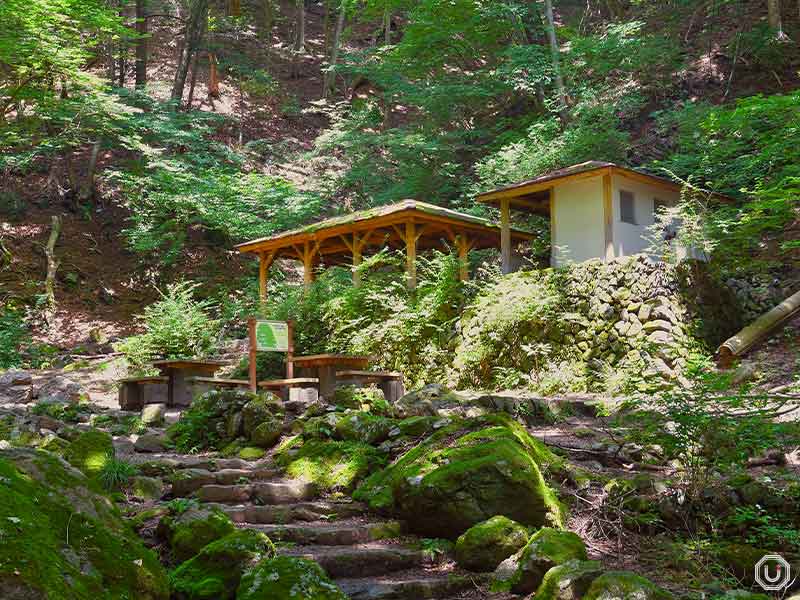
Public restroom at the rest area
A rest area in the Rock Garden, surrounded by rocks and dappled sunlight, offers a serene break for hikers.
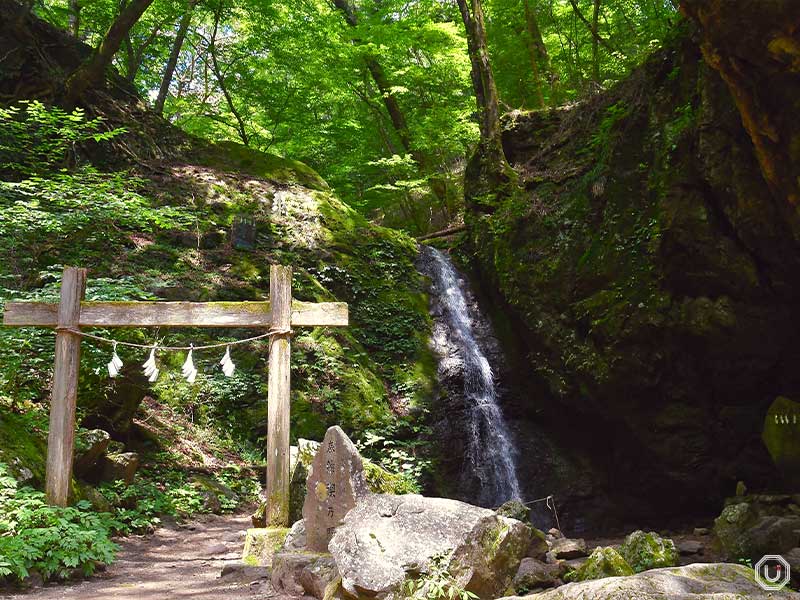
Ayahiro Waterfall
Further on, the 10-meter (33-foot) Ayahiro Waterfall, used for Musashi Mitake Jinja Shrine’s ascetic rites, exudes sacred tranquility.
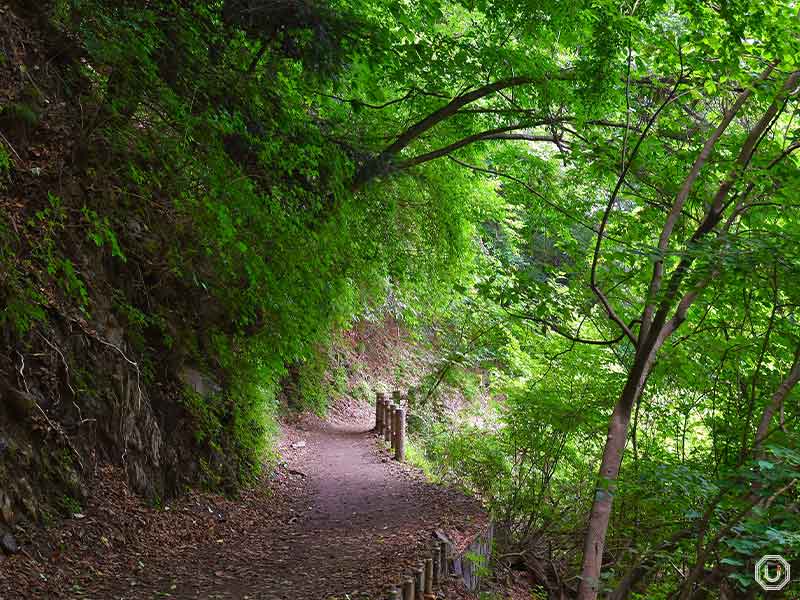
Passing through a green tunnel, you return to the shrine approach, leading back to the eatery area.
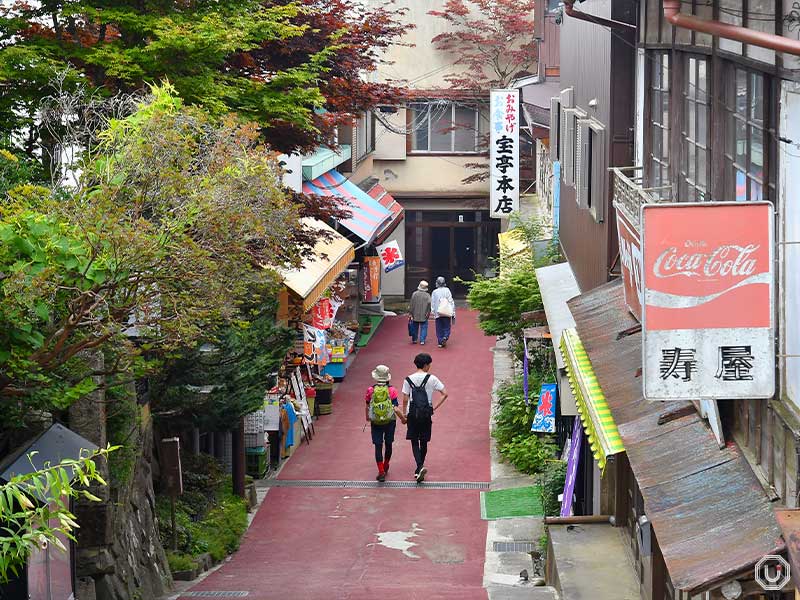
Enjoying mountain cuisine with stunning views is a hiking highlight. At the restaurant “Momijiya,” a four-generation eatery, savor matcha-infused udon noodles while gazing at Mt. Mitake’s scenery.
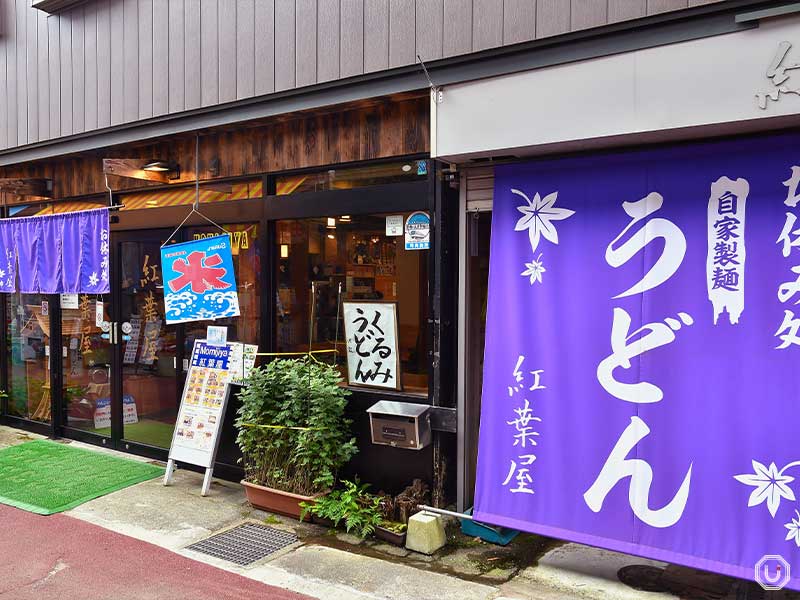
Exterior of Momijiya
For photos and menu details of Momijiya’s signature matcha-infused noodles with walnut dipping sauce, and mountain vegetables, check out this article.
From Tokyo, Mt. Mitake offers a day-trip escape into Japan’s rich nature, with seasonal beauty. Why not walk this tranquil mountain on your next trip?
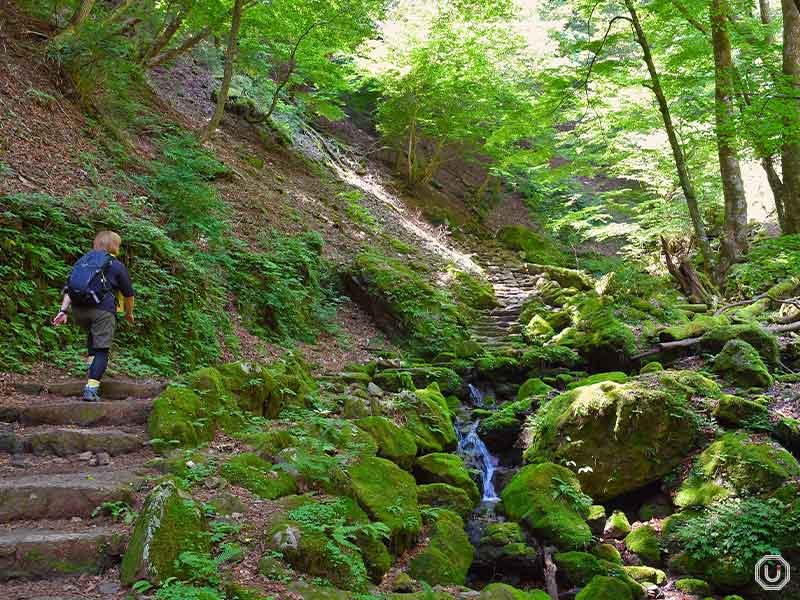
Information
| Name | 御岳山 Mt. Mitake |
|---|---|
| Address | 38-5 Mitakeyama, Ōme City, Tokyo Mitake Visitor Center |
| Phone number | 0428-78-9363 Mitake Visitor Center |
| Mountain visiting hours | 24 hours for pedestrian access |
| Closed | No holidays |
| Admission | Free |
※All information in this article is accurate as of August 2025.
